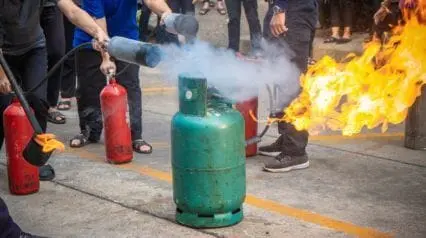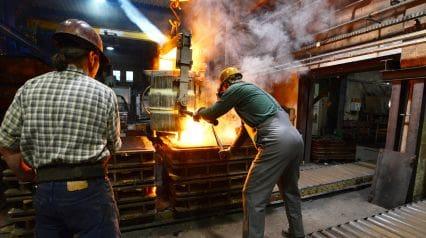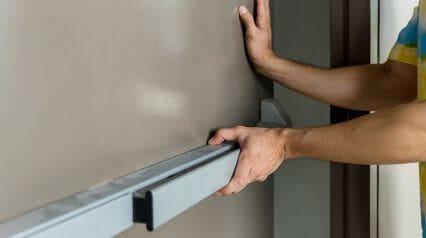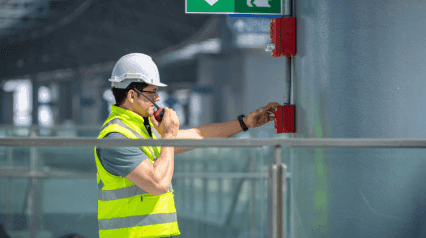What is a Fire Drill?
A fire drill is a structured and rehearsed exercise that aims to familiarize individuals with the necessary steps to take when a fire emergency takes place within the premises. The primary goal is to promote a quick, orderly, and safe evacuation of the individuals while avoiding the risk of injuries or casualties.
Importance
Fire drills are crucial for safety preparedness as they allow the practice of emergency procedures, minimize panic, and ensure effective evacuation during fire emergencies. Practicing fire drills will also educate participants on fire safety measures and promote compliance with regulations.
Legal Requirements and Regulations for Fire Drills
Complying with legal requirements and regulations for fire drills is essential for promoting a safe environment in various settings. These regulations ensure that organizations, institutions, and residential buildings take proactive measures to prepare for fire emergencies and protect the lives of occupants. Legal requirements and regulations may differ per country/region of where your premises are located. Here are the common fire safety agencies from around the world to keep you updated :
- United States – National Fire Protection Association (NFPA) for general guidelines about fire safety.
- United Kingdom – Regulatory Reform (Fire Safety) Order 2005. The responsible authority that enforces fire safety regulations, including fire drills, is the local Fire and Rescue Service.
- Australia – Each state and territory has its own fire safety agency responsible. For example, in New South Wales, fire safety is regulated by Fire and Rescue NSW, while in Victoria, it is managed by the Metropolitan Fire Brigade (MFB) and Country Fire Authority (CFA), depending on the location.
- European Union – Each country may have its own national regulations that align with EU directives. The EU’s Fire Protection Products Directive (2001/95/EC) establishes requirements for fire safety equipment and products, but it does not specifically address fire drill regulations.
How to Implement Fire Drills
Fire drills should be an integral part of every safety plan, whether in a workplace, school, or residential building. The process of scheduling these drills is crucial for ensuring that everyone is adequately prepared in case of a fire emergency.
Regularly scheduled fire drills are essential to reinforce safety protocols and keep occupants prepared at all times. Ideally, these drills should be conducted at least once every six months to ensure their effectiveness.
During a fire drill session, several elements contribute to making the drill effective and informative for all participants:
- Educate Participants about Fire Safety: Before conducting the drill, all employees or residents should receive comprehensive education about the purpose, procedures, and expectations during the drill. Awareness is the first step towards effective fire emergency response.
- Conduct Mock Scenarios: The heart of a fire drill is the practice of evacuation procedures. Occupants should be familiarized with the building’s escape routes, exit doors, and assembly points. This knowledge can be life-saving in a real fire scenario.
- Demonstrate Proper Use of Fire Extinguishers: In some settings, certain individuals may be trained to use fire extinguishers. As part of the drill session, they should be instructed on the correct usage and handling of fire extinguishers. However, only trained personnel should attempt to use them during real fire emergencies.
Additional items may be added depending on the premises and schedule. You may refer to our fire drill checklist to ensure that all necessary steps and safety measures are followed during the drill session.
How to Evaluate Drill Performance
Evaluation should cover post-fire drill performance and whether the following criteria are met:
- Response Time: Response time during a fire drill is crucial to measure how quickly occupants can evacuate the premises. A shorter response time indicates that individuals are familiar with the evacuation procedure and can act promptly during an emergency.
- Communication Effectiveness: Effective communication during a fire emergency is vital to ensure everyone receives clear instructions. Evaluators should assess the communication channels used, such as alarm systems and intercoms, to determine their efficiency in conveying emergency messages.
- Coordination and Leadership: Evaluators should pay attention to how designated leaders manage the situation and whether they effectively guide others to safety.
Post-fire drill evaluation should give you insights and areas of improvement in your fire safety plan. This includes all of the criteria from preparation, mock scenarios, and post-fire drill sessions are conducted.
It’s crucial to implement these areas of improvement to determine if the organization needs more employee training about fire safety, restocking of safety equipment/fire extinguishers, or a better fire safety plan for proper and immediate evacuation of personnel.
Frequently Asked Questions (FAQs) about Fire Drills
Several key individuals and teams are recommended to organize a well-coordinated and effective fire drill. These range from the following:
- Safety officers,
- Emergency response team,
- Facility management team,
- Human Resources (HR) department,
- External emergency services
- Occupants or employees (given that they are trained with fire safety planning)
Not participating in a fire drill can lead to unfamiliarity with emergency procedures, increased panic during a real fire emergency, and compromised efficiency during evacuations. It also risks non-compliance with safety regulations and puts both the individual and others at potential risk.
The duration of a fire drill typically varies based on the size of the building or facility and the number of participants. On average, a fire drill usually lasts between 10 to 20 minutes. This time frame allows for the simulation of a fire emergency, evacuation procedures, and post-drill assessments without causing significant disruptions to daily operations.




